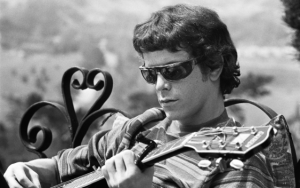THE VELVET UNDERGROUND: 4 STARS. “That love and peace crap, we hated that.”
 Fans of The Beatles and The Rolling Stones may disagree, but The Velvet Underground are arguably the most influential band of the late 1960s and early 1970s. “The Velvet Underground didn’t sell many records,” said Brian Eno, “but everyone who bought one went out and started a band.”
Fans of The Beatles and The Rolling Stones may disagree, but The Velvet Underground are arguably the most influential band of the late 1960s and early 1970s. “The Velvet Underground didn’t sell many records,” said Brian Eno, “but everyone who bought one went out and started a band.”
They pointed the direction for everyone from David Bowie and Patti Smith to U2 and The Black Angels, and “The Velvet Underground,” a striking new documentary from director Todd Haynes, and now playing on Apple TV+, aims to bring people up to date on one of the most ahead-of-their-times bands of the 20th century.
Narrated by interviews with friends, family, colleagues, and, most importantly of all, the band, guitarist and singer Lou Reed, guitarist Sterling Morrison, bassist and violist John Cale, singer Nico, and drummer Maureen “Moe” Tucker, the film is a trippy look at the tumultuous time in New York City’s art world that gave birth to the band. “That love and peace crap,” says Tucker, “we hated that.”
Using split screens, montages and plenty of archival footage, Haynes paints an impressionistic portrait of the influences—early rock n’ roll, doo-wop, gay life in New York, drugs, Andy Warhol and more—that go a long way to reconcile how Cale’s experimental “drone” work—the “hum of Western civilization,” he calls it—blended with Reed’s more melodic sense to form a renegade sound nobody had heard before. Add to that, lyrics that essayed heroin addiction, death, sado-masochism and other topics not usually sung about in three-minute pop songs and the result is aggressively radio unfriendly rock whose echoes are still felt today. “We didn’t put things in,” Reed said, “we took things out.”
Haynes meticulously walks us through the band’s history, the rise, fall and ugly dissolution, wallpapering the movie with a visual onslaught of images that suggests the multi-media presentation Andy Warhol created for the band’s live performances. The pop artist saw those shows as a “chance to combine music, art and films,” and the documentary continues that spirit to capture the excitement of the story. The storytelling is rather conventional, linear, but the visuals are an idiosyncratic eyeful that match the ambitious nature of the music.
“The Velvet Underground” focusses on the band’s classic line-up heyday, giving later incarnations a bit of a short shrift. Nonetheless, the doc captures the mood and the spirit of a band music journalists have struggled to pigeonhole for decades.
